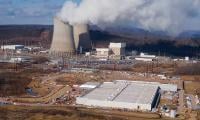Calls for satisfactory international oversight
WASHINGTON: An independent US report has declared the Indian nuclear programme not only unsafe but also called for a satisfactory international oversight.
The recently released report by the Belfer Center at the Harvard Kennedy School identified problems arising from the gaps in the commitments that India made after the nuclear deal, and focused on India's separation plan, its Safeguards Agreement and Additional Protocol.
The authors of the report titled ‘The Three Overlapping Streams of India’s Nuclear Programmes’ further highlighted that Pakistan had a reason to be concerned that India could use its unsafeguarded portions for boosting its nuclear weapon system. The report observes that India is currently running three streams that include: civilian safeguarded, civilian un-safeguarded, and military.
‘‘The relationships and overlap among the three streams are not transparent,’’ the report says adding that IAEA may contribute to India’s stockpile of unsafeguarded weapons-usable nuclear material.
The Separation Plan did not extend safeguards to a number of nuclear facilities that serve civilian functions, and consequently these facilities may also be used in India’s military programme.
Even though there was no formal verification whether facilitates in the “civilian unsafeguarded” stream were contributing nuclear material to the military stream, the report warned that its current stockpile of reactor-grade plutonium from power reactors has the significant potential to be made available to weaponry programme.
The safeguards agreement also allows India to store, use, or process nuclear material subject to safeguards at a facility that is not under continuous safeguards. In addition, the agreement contains provisions for the substitution of unsafeguarded material for safeguarded material.
These provisions introduce the potential for safeguarded nuclear activities to contribute to India’s nuclear weapons programme.
India negotiated with the IAEA a much more limited additional protocol: the reporting and access provisions of India’s additional protocol are effectively restricted to India’s export activities. Consequently, India’s safeguards agreement and its additional protocol do not have any practical application to its uranium and thorium mines, heavy water production facilities, nuclear fuel cycle-related research activities, or plants where it manufactures equipment for its nuclear facilities.
Authors recommend that India should achieve a cleaner separation of its civilian and military facilities by bringing eight unsafeguarded civilian facilities under safeguards.
They also recommend that India should bring its fast breeder programme as well as upcoming HEU facilities under safeguards. This, authors believe, would be in true spirit of supporting FMCT which India does since it would demonstrate that it is creating conditions that support such a treaty.















